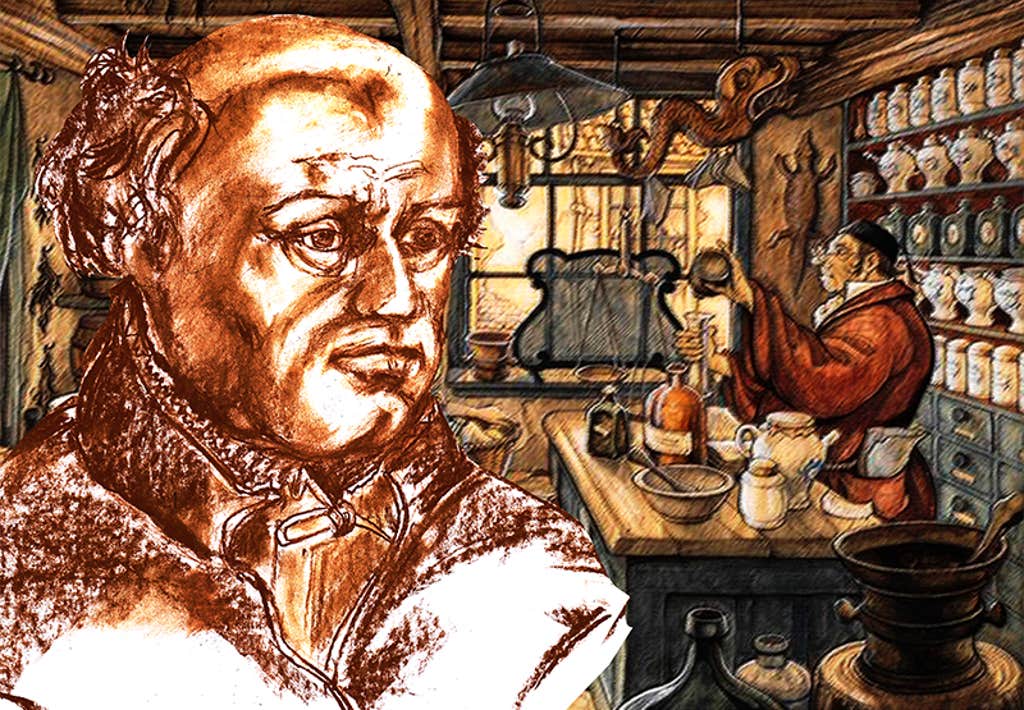In 1936, the economist John Maynard Keynes purchased a trove of Isaac Newton’s unpublished notes. These included more than 100,000 words on the great physicist’s secret alchemical experiments. Keynes, shocked and awed, dubbed them “wholly magical and wholly devoid of scientific value.” This unexpected discovery, paired with things like Newton’s obsession with searching for encrypted messages in the Bible’s Book of David, showed that Newton “was not the first of the age of reason,” Keynes concluded. “He was the last of the magicians.”
When it came to fascination with the occult, Newton was hardly alone. Many contemporary scientists may cast aspersions on spells, mythical tales, and powers of divination. Not so for many of the early modern thinkers who laid the foundations of modern science. To them, the world teemed with the uncanny: witches, unicorns, mermaids, stars that foretold the future, base metals that could be coaxed into gold or distilled into elixirs of eternal life.
These fantastical beliefs were shared by the illiterate and educated elite alike—including many of the forebears of contemporary science, including chemist Robert Boyle, who gave us modern chemistry and Boyle’s law, and biologist Carl Linnaeus, who developed the taxonomic system by which scientists classify species today. Rather than stifling discovery, their now-arcane beliefs may have helped drive them and other scientists to endure hot smoky days in the bowels of alchemical laboratories or long frigid nights on the balconies of astronomical towers.
Carl Linnaeus urged the Royal Swedish Academy of Sciences to launch a hunt for mermaids.
To understand the role of magic in spurring scientific progress, it helps to understand the state of learning in Europe in those times. Throughout the Middle Ages, many scholars were fixated on the idea that knowledge could only be gleaned from ancient texts. Universities taught from incomplete, often poorly translated copies of Aristotle, Ptolemy, and Galen. To stray from the giants was a crime: In 14th-century Oxford, scholars could be charged 5 shillings for contradicting Aristotle. Curiosity was considered a sin on par with lust. A powerful motivator was needed to shuck off ancient thinking.
One of the first influential thinkers to break with the old ways was the 16th-century Swiss-German physician Paracelsus. The father of toxicology, known for his pioneering use of chemicals in medicine, Paracelsus was among the first of his time to champion the importance of experimentation and observation—a philosophy which would set the foundations for the scientific method. Paracelsus showed the scholars what he thought of their old books by publicly burning his copies of Galen and Avicenna.
But what led him to this experiment-first approach? Perhaps it was because, to Paracelsus, experimentation was a kind of magic. His writing fuses scientific observation with the occult. To him, medicine, astrology, and alchemy were inextricably linked—different ways of unveiling sacred truths hidden in nature by God. Paracelsus considered himself a kind of magus, as he believed Moses and Solomon had been, as Newton would view himself 150 years later. Paracelsus believed, though, that divine knowledge could be gained not just by studying scripture, but also by studying nature. The alchemical workbench, the night sky—these were even surer routes to God than any dusty old textbook.

Paracelsus’ quasi-scientific, quasi-magical worldview would profoundly influence scientists for centuries to follow. As historian Violet Moller puts it in her new book Inside the Stargazer’s Palace, “To our rational, orderly, 21st-century minds the 16th-century map of knowledge appears messy, a paradoxical and confusing place where magic was studied alongside geometry, people searched obsessively for the philosopher’s stone and astrology was fundamental to many areas of life.” But in this mixed-up cauldron of magic and nature, real science was forged.
Take the astronomer and Danish nobleman Tycho Brahe. When he lost his nose (and almost his life) in a duel, he became fascinated by Paracelsian medicine and astrology. At the time, scholars were encouraged to study stars’ positions not by gazing skyward, but by looking them up in books called ephemerides. But Brahe, who had about as much regard for established scientific norms as Paracelsus, realized these tables were inaccurate. He devoted his life to recording what would become one of the most accurate and comprehensive star catalogs of his time in Europe, developing new observation techniques and instruments along the way—including the sextant, used to measure celestial altitudes and angular distances.
Like Paracelsus, Brahe was motivated by a belief that studying the cosmos could bring him closer to God. He was an avid believer in astrology and alchemy. In his book De Nova Stella, Brahe recorded his observations of the supernovae that would make him famous—not just the star’s positions and attributes, but also the tumult and misfortune he believed the new star portended. Five years later, he observed a comet so disturbing that it prompted him to send a secret report to the king and queen of Denmark, warning, “the eternal Sabbath of all creatures is at hand.”
The king and queen took the astrological predictions seriously, as did many rulers of their time, who couldn’t resist the alluring idea of the wisdom provided by astrological prognostications, funding their empires with gold coaxed from mercury, or the promise of eternal life from the philosopher’s stone. So in an age before research institutes and N.S.F. grants, science was funded by rich patrons. Astrologers and alchemists were a fixture of early modern courts.
Perhaps the most generous science patron of all time was Holy Roman Emperor Rudolf II. At his palace in Prague starting in the 1570s, Rudolf employed mathematicians, astrologers, instrument makers, and as many as 200 alchemists. He neglected his political duties in favor of spending time at his own alchemical bench or with the natural philosophers in his employ. The workshops in his palace were the best around. His “cabinet of curiosities” contained rare objects from the new world, including a “unicorn horn” (later revealed to be a narwhal tusk), that scientists were allowed to study. He was patron to Brahe and German astronomer and mathematician Johannes Kepler, showering them with wealth and resources, keeping them close to cast horoscopes right up until his death in 1612.
In 14th-century Oxford, scholars could be charged 5 shillings for contradicting Aristotle.
These investments, regardless of the occult motivations of those who contributed them, resulted in real scientific progress: Alchemy led to an interest in mining and the study of minerals, improvements in the distillation process, the design of furnaces, ventilation systems, and glass and ceramic making techniques. Interest in astrology led to better lenses, mirrors, astronomical equipment, and even clocks, which were used to time the movement of stars.
Even well into the 17th century, as recognizable scientific institutions like the Royal Society sprang into existence, the supernatural held scientists in its thrall. Its president, Newton, practiced alchemy and deciphered biblical prophecy. Respected member and natural scientist Sir Kenelm Digby believed in “weapon salve”—a medical treatment that cured wounds when applied not to the wound itself, but to the weapon that had created it. Robert Boyle spent a good deal of time investigating second sight, the uncanny ability of some Scottish Highlanders to see into the future. Rene Descartes proposed a scientific explanation for cruenation—the commonly held belief that a murder victim’s corpse would spontaneously spout blood in the presence of its killer. William Harvey, known for discovering the circulation of blood in the body, once dissected a toad he thought was a witch’s familiar. As late as 1749, Linnaeus urged the Royal Swedish Academy of Sciences to launch a hunt for mermaids.
To our contemporary ears, most all of this may sound fairly ridiculous. But as Edward Donlick puts it in The Clockwork Universe, “The world was so full of marvels, in other words, that the truly scientific approach was to reserve judgment about what was possible and what wasn’t, and to observe and experiment instead.” To the 17th-century scientist, anything was on the table, so long as it could be experimentally studied.
Today, we know how the story ends: Belief in astrology, alchemy, and witchcraft declined in places where empiricism and skepticism became cornerstones of science. But perhaps early scientists’ fascination with the occult should remind us of other tenants of discovery: open-mindedness and curiosity. Witches, mermaids, and the philosopher’s stone may not have survived modern scrutiny, but it was curiosity about them that drove real progress and allowed early thinkers to stray from established norms. In this sense, curiosity is a kind of magic. ![]()
Lead image: Yulia Serova / Shutterstock
































